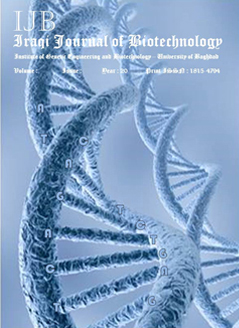Antibiofilm Activity of Chalcone in Methicilin Resistant Staphylococcus aureus
Abstract
Methicillin-resistant Staphylococcus aureus (MRSA) is known as a key agent implicated in infections resulting in significant morbidity and mortality among patients. MRSA can develop resistant structure named biofilm. Among the various naturally occurring classes, chalcones are important intermediates for the biosynthesis of flavonoids. Therefore, the current study aimed to investigate in vitro the inhibitory effect of chalcone on MRSA planktonic cells and biofilm. Around 111 Staphylococcus aureus locally isolated from different clinical specimens were collected in this study. Methicillin resistance was evaluated by detection mecA amplification by PCR assay. Minimum inhibitory concentration (MIC) of chalcone was estimated by broth microdilution method. Moreover, Atomic Force Microscopy (AFM) technique was employed for confirming the effect of chalcone on biofilm. The present findings revealed that MRSA constituted, nearly, (93.22 %) (55 isolates) of all S. aureus isolates. Most of MRSA isolates were able to form biofilms, around 70.9% have the capacity to form strong biofilm. Chalcone at MIC (5 µg/ml) significantly reduced the planktonic MRSA cells. Whereas at Minimum Biofilm Inhibitory Concentration (MBIC) (20 µg/ml) and sub MBIC (15 µg/ml)reduced biofilm formation significantly and this findings are confirmed by using Atomic force microscopy. In conclusion, suggest that chalcone could be a new agent for prevention of bacterial adherence to surfaces and could be identified as anew agent against S. aureus infection.


